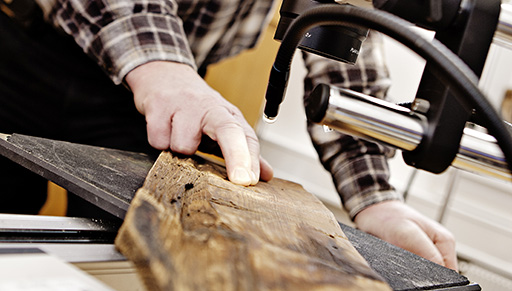Dendrochronology

Dendrochronology
In Norway, pine and spruce are very common building timber. Under the bark of the trees, a tree ring is grown every summer. On a cross-section, for example on a stump, it is possible to count the tree rings from the oldest at the pith to the youngest under the bark. If the tree-ring widths of each individual ring are measured, from the pith and out to the bark, the variation between wide and narrow tree rings show the growth pattern throughout the lifetime of the tree.
Often, trees of the same species and from the same region will develop matching growth patterns because the annual ring widths reflect the summer temperature. A hot summer gives more growth and wider tree rings compared to a cool summer, thus developing a growth pattern that is unique to these years. If the tree rings are measured on several trees within the same area, a matching tree-ring pattern can be expected. The mean curve that emerges from all the trees measured amplifies common influences such as summer temperatures. At the same time, individual impacts are reduced, for example, increased growth after the felling of neighbouring trees.
The principle of dendrochronology is to compare a tree-ring-width series of unknown age to a tree-ring chronology of known ages, so-called cross-matching. When a chronology is constructed based on the series from living trees, it is possible to date timber from relatively young timber houses if there is a period of common growth. Chronologies based on timber in Norway reach about 1500 years back for pine and about 700 years for spruce. In southern Norway and parts of Western Norway, oak is used in several buildings, forming the basis for Norwegian oak chronologies. Due to local climatic variations, tree-ring chronologies are constructed from different regions, and there must be separate series for different tree species.
Samples from a minimum of ten different logs is normally required to perform the dendrochronological age determination of a house. A slice from a log during a restoration or from a window or door opening can provide the best samples. The most common alternative is to use a corer which drills out pencil-thick samples.
The variations in the width of different tree rings are often less than one millimeter, so high accuracy and specially designed equipment are required for measurement and analysis. Performing dendrochronological dating therefore requires long experience. Results are verified through collaboration and testing between established laboratories.